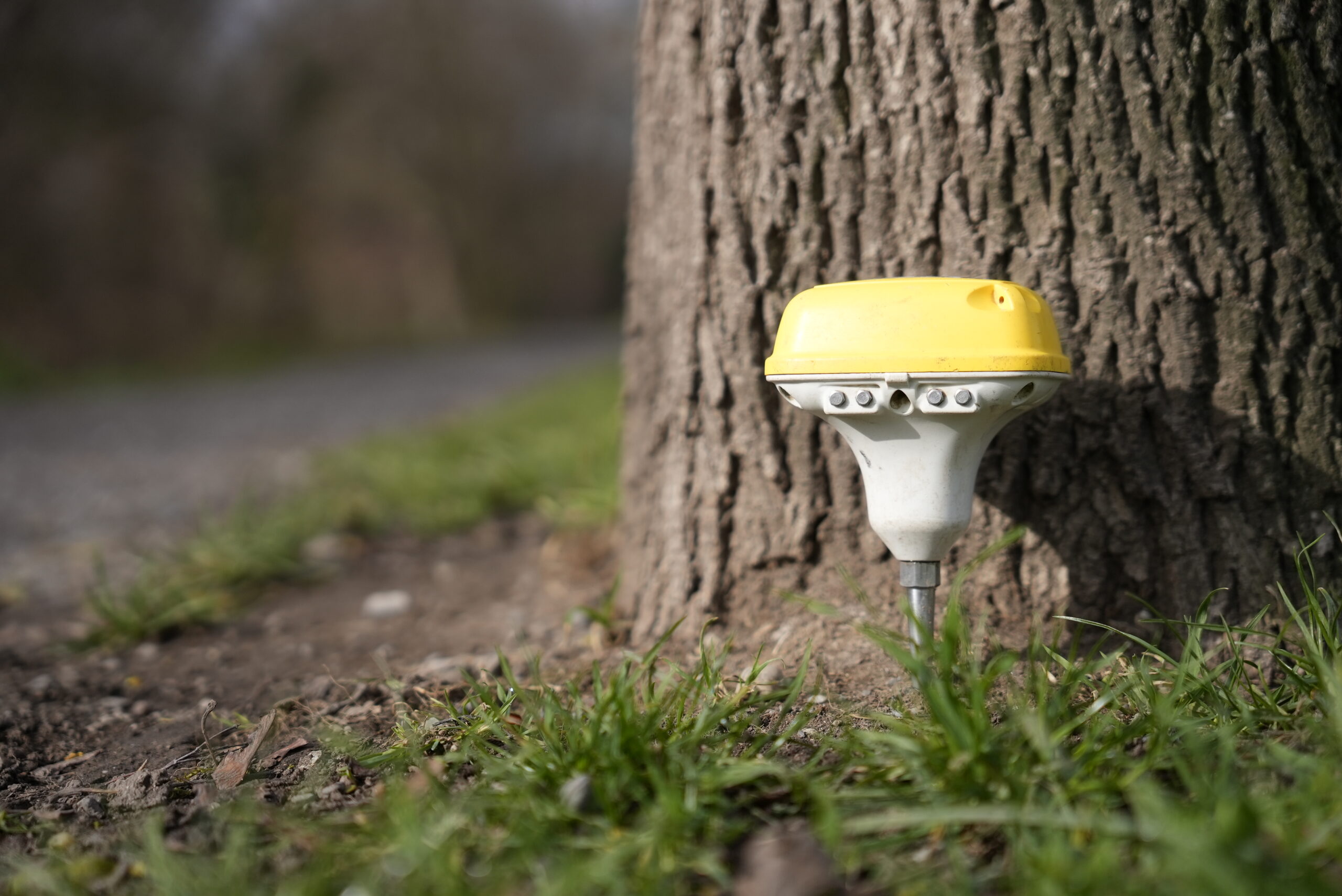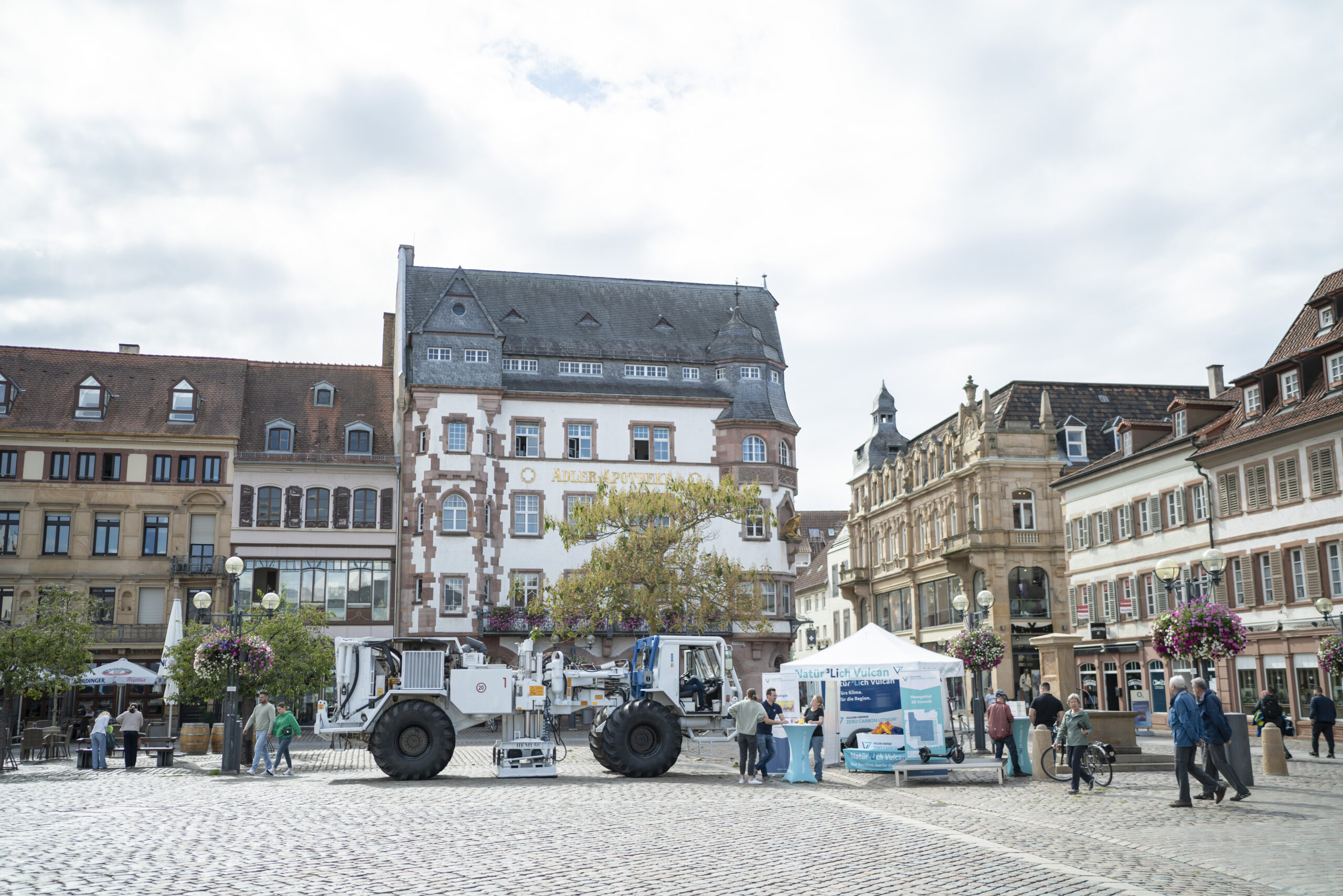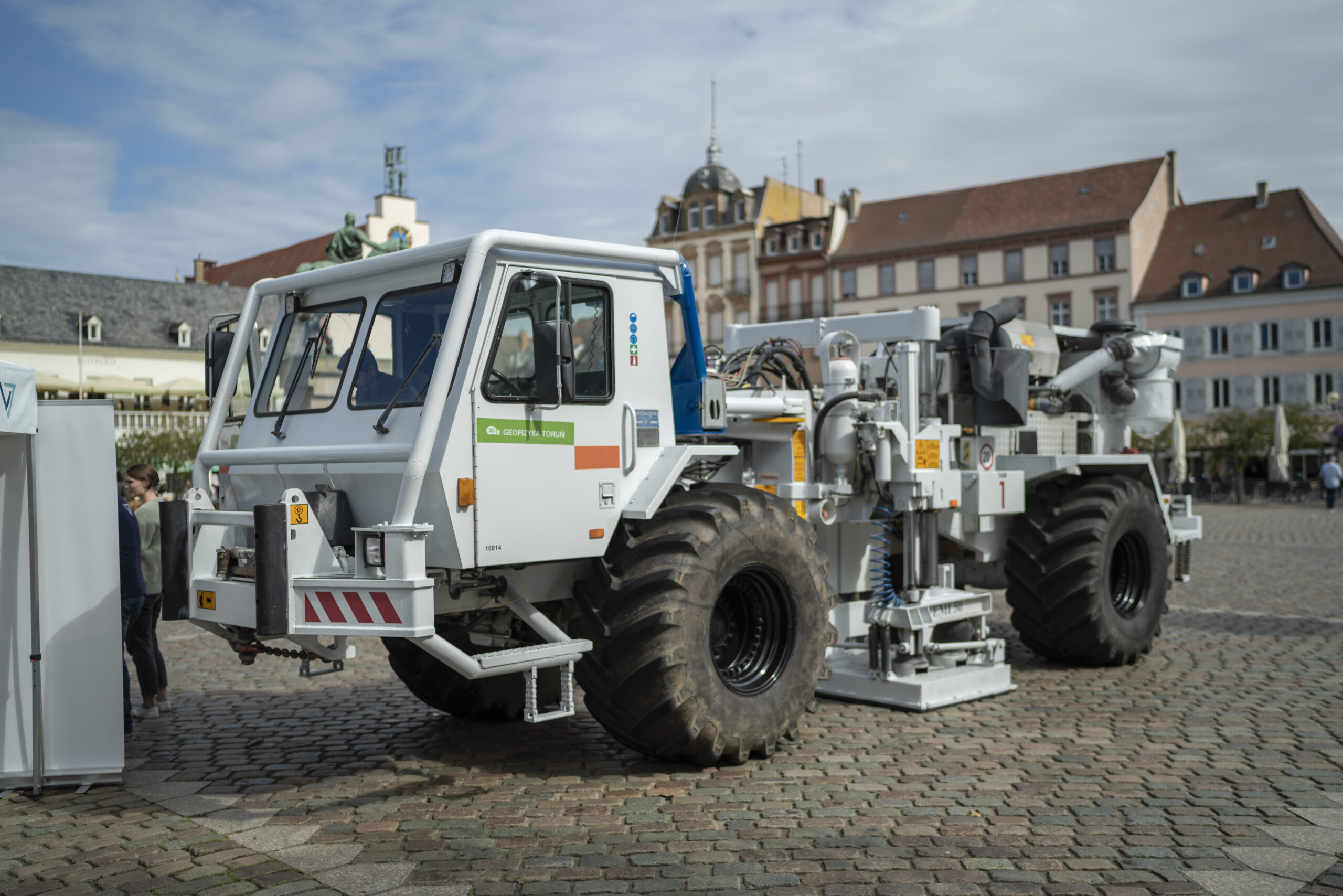
Important measurement method 3D Seismic.
3D Seismic is a measurement method used for detailed geological exploration of the subsurface. With the help of 3D Seismic, a three-dimensional model of the subsurface is created.
What is it and how does it work? 3D Seismic.
3D Seismic is a measurement method used for detailed geological exploration of the subsurface. With the help of 3D Seismic, a three-dimensional model of the subsurface is created. This is essential in identifying suitable drilling sites for Vulcan’s projects.
3D Seismic is comparable to the ultrasound examination performed by a medical professional: In seismic exploration, an attempt is made to visualize the interior of the Earth without physically opening it. Technically, this is achieved in seismic exploration through sound waves: Specialised vehicles known as Vibro-Trucks traverse the survey area and generate vibrations on the surface, with the resulting waves penetrating the subsurface. These vibrations are reflected by various rock layers and the reflections are then detected at the surface by geophones.

Prior to the seismic survey.
- Obtaining permits from the Mining Office
- Information and coordination with local authorities, mayors, and municipalities
- Public Relations and community engagement

Conducting the seismic survey.
- Permitting (01) – securing permission to access properties and deploying geophones
- Surveying, parameter tests, test lines (02)
- Deploying geophones (03)
- 3D seismic survey (04)
- Retrieval of geophones (05)
- Seismic survey duration depends on survey area and approvals

Post-seismic survey.
- In-house data processing, evaluation, and interpretation
- Remediation and resolution of issues, e. g., on-field roads by road builders
- Pre-survey phase factors: infrastructure, unexploded ordnance, nature protection
- State authorities receive data for official duties

Ensuring safe investigation Does 3D Seismic present any dangers?
Minor damages resulting from 3D Seismic cannot be entirely ruled out despite all precautions. During seismic surveys, the following types of damage may occur, although unlikely:
- Vibro-Trucks leave tracks.
- Vibro-Trucks compact the ground.
- Hairline cracks may appear on the plaster of buildings.
To minimise risks of structural damage, the truck’s vibrations are continuously monitored using vibration monitoring according to DIN 4150 standards, and the risk to the building structure is minimised by adjusting the intensity of vibrations accordingly. In areas with sensitive infrastructure, specific points of stimulation are omitted when necessary.

Learn more About the topic.
As part of our integrated project, we use the deep geothermal energy of the Upper Rhine Graben both for renewable energies and for ZERO CARBON LITHIUM™. We are therefore doing our utmost to provide information about deep geothermal energy. Here you can find further interesting links on the topic.
Since 1991, the German Geothermal Energy Association has made an effort to inform the public about all aspects of geothermal energy and deep geothermal energy. Here you will not only find the latest news and exciting key figures, but also relevant questions about geothermal energy in your home, groundwater protection or insurance in the event of damage.
The State Geothermal Research Center has worked with experts from various fields to provide comprehensive answers to many questions on deep geothermal energy. Easy-to-understand summaries and clear illustrations for each area make the program accessible to everyone.
The Rhineland-Palatinate State Office for Mining and Geology can provide special insights into regional geothermal energy and current projects. It also offers services such as the state earthquake service, or explains legislation that is not only essential for us, but can also provide you with valuable background knowledge.
